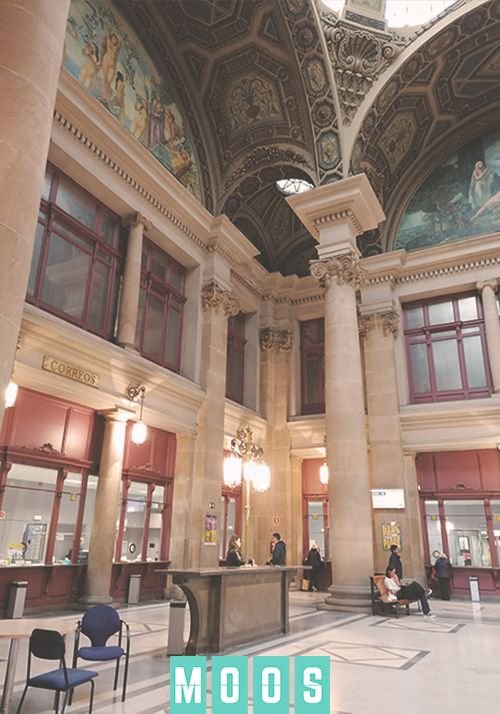The Plaza Antoni López of Barcelona, houses a monumental building, whose towers can be seen from various spots in the city, with stairs the many look for in order to enjoy the meal they bought in Bo de B (check out my article about this place and its take away food).
Let’s talk about the post office building of Barcelona. A building that, despite being really close to everybody, is seldomly visited, and very few know its interior and enjoy the view of its dome.


A Little history
Barcelona’s first postal service started in the year 1338, being managed by a group of people, with its headquarters in Capilla d’en Marcús, in the middle of Barrio de la Ribera (now “Barrio del Born”). We will talk more about it in the next posts, just know that it’s one of the oldest buildings that are still intact, with parts of its structure being of roman style.
In 1716, King Felipe V incorporated the postal service to the Spanish kingdom and its headquarters moved to Carrer Correu Vell (el correo viejo, the old post office).
That was not its final location, and the headquarters kept relocating to various places in the city.

Finally, in the beginning of the 20th century, the project that we’re observing now finally arrived.
Via Laietana was about to be open, a new avenue in the middle of “casco antiguo” that connected the modern “Barcelona del Eixample” with the sea. In this context, a new project for a post office building was created, whose activity had been transforming due to the arrival of new means of transport.
Features of the Post Office building
The building, designed by architects Josep Goday and Jaume Torres i Grau and of neoclassical style, was built between 1916 and 1929, and open at the same time as that year’s universal exposition, whose main venue was Barcelona.
Built with stones from Montjuïc digging site, a mountain that is a symbol of Barcelona, with a main facade that has 4 giant columns, a baseboard with the inscription CORREOS Y TELÉGRAFOS, four sculptures of feminine figures that represent communications, transportations and the Spanish royal house shield, at the time of King Alfonso XIII.


But without a doubt, the most attractive part lies inside the building. So don’t miss it when you are around this area.
This is a public building, which means there is no entrance fee, and the access is not restricted.
Honestly, most people don’t include this site during their visit, and miss the chance to enjoy the inside part of it. But it’s worth the effort to climb its stairs, and marvel with the crystal dome that crowns the central part of the building, filling it with natural light.
And what about using the postal service itself?: A postcard of Barcelona in your hand, sending it to a loved one, like in the “old days”.







0 Comments